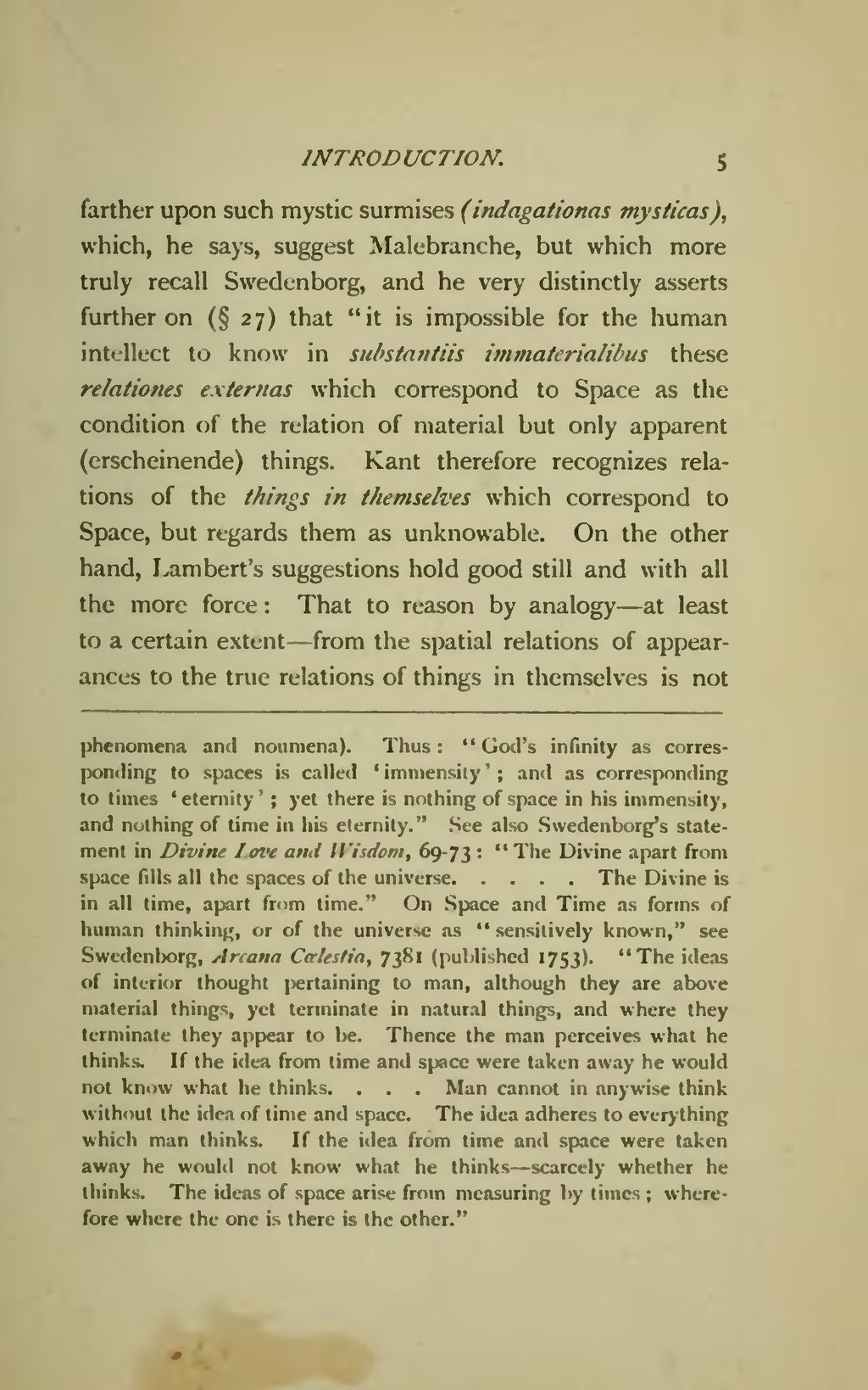farther upon such mystic surmises (indagationas mysticas), which, he says, suggest Malebranche, but which more truly recall Swedenborg, and he very distinctly asserts further on (§ 27) that "it is impossible for the human intellect to know in substantiis immaterialibus these relationes externas which correspond to Space as the condition of the relation of material but only apparent (erscheinende) things. Kant therefore recognizes relations of the things in themselves which correspond to Space, but regards them as unknowable. On the other hand, Lambert's suggestions hold good still and with all the more force: That to reason by analogy—at least to a certain extent—from the spatial relations of appearances to the true relations of things in themselves is not
phenomena and noumena). Thus: "God's infinity as corresponding to spaces is called 'immensity'; and as corresponding to times 'eternity'; yet there is nothing of space in his immensity, and nothing of time in his eternity." See also Swedenborg's statement in Divine Love and Wisdom, 69–73 "The Divine apart from space fills all the spaces of the universe. . . . . The Divine is in all time, apart from time." On Space and Time as forms of human thinking, or of the universe as "sensitively known," see Swedenborg, Arcana Calestia, 7381 (published 1753). "The ideas of interior thought pertaining to man, although they are above material things, yet terminate in natural things, and where they terminate they appear to be. Thence the man perceives what he thinks. If the idea from time and space were taken away he would not know what lie thinks. … Man cannot in anywise think without the idea of time and space. The idea adheres to everything which man thinks. If the idea from time and space were taken away he would not know what he thinks—scarcely whether he thinks. The ideas of space arise from measuring by times; wherefore where the one is there is the other."
